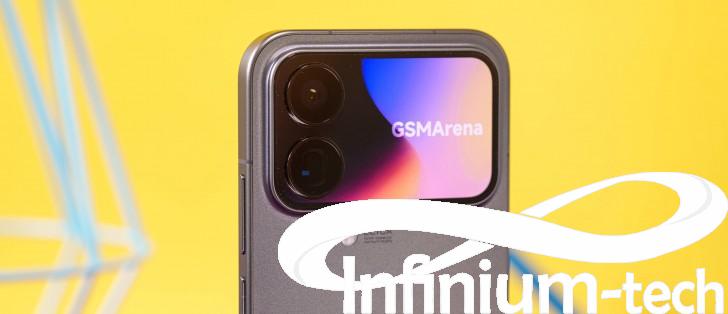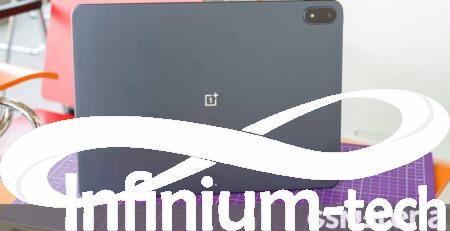Xiaomi 17 Pro Max review | Infinium-tech
Introduction and Specifications
From 15 straight to 17. This year’s flagship lineup from Xiaomi aligns with Apple’s naming scheme to compete directly with the iPhone 17 series. It also introduces a new Pro Max edition, which is, to some extent, a spiritual successor to the Xiaomi 15 Pro. It’s just that it’s a little bigger now.
One thing to keep in mind is that we are reviewing the Chinese version of the Xiaomi 17 Pro Max. International models have not been announced yet, so some hardware or software features may differ whenever the phone is released internationally. We purchased our review unit from the Mi Store in China, but many third-party resellers will offer gray imports, so the phone is definitely worth considering.

The Xiaomi 17 Pro Max, at least for now, sits at the top of the lineup until the Xiaomi 17 Ultra arrives, and is built around a 6.9-inch LTPO OLED display. This is a slight bump from the 6.73-inch screen of the Xiaomi 15 Pro last year.
However, the front display is not the main feature. This is the one at the back. Yes, Xiaomi is trying something bold with its flagship series, and it is offering a secondary display on the back. This is again LTPO OLED with the same refresh rate and high-end features, but in a 2.9-inch diagonal. This is definitely something that sets the Xiaomi 17 Pro Max apart and spices up the flagship segment. Then again, a secondary display isn’t unheard of; In fact, it is a well-known but forgotten feature.
Xiaomi has one phone with a secondary display in its portfolio – Xiaomi 11 Ultra. However, at the time the display was smaller and much less functional, whereas the 17 Pro Max offers a more polished design and some great features that make the display much more useful.
Xiaomi 17 Pro Max specifications at a glance:
- Body: 162.9×77.6×8.0 mm, 219 g; Glass front (Dragon Crystal Glass 3), aluminum frame; IP68 dust-proof and water-resistant (submersible up to 6 meters for 30 minutes).
- Display: 6.90″ LTPO AMOLED, 68B color, 2160Hz PWM, 120Hz, Dolby Vision, HDR Vivid, HDR10+, 3500 nits (peak), 1200x2608px resolution, 19.56:9 aspect ratio, 416ppi; Secondary display (rear):, LTPO AMOLED, 120Hz, Dolby Vision, HDR Vivid, HDR10+, 3500 nits (peak), 2.9 inches, 596 x 976 pixels.
- Chipset: Qualcomm SM8850-AC Snapdragon 8 Elite Gen 5 (3 nm): Octa-core (2×4.6 GHz Oryon V3 Phoenix L + 6×3.62 GHz Oryon V3 Phoenix M); Adreno 840.
- Memory: 512GB 12GB RAM, 512GB 16GB RAM, 1TB 16GB RAM; UFS 4.1.
- OS/Software: Android 16, HyperOS 3.
- rear camera: wide (main): 50 MP, f/1.7, 23mm, 1/1.28″, 1.22µm, Dual Pixel PDAF, OIS; telephoto: 50 MP, f/2.6, 115 mm, 1/1.95″, 0.8µm, PDAF (30 cm – ∞), OIS, 5x optical zoom; ultra wide angle: 50 MP, f/2.4, 17mm, 102˚, 1/2.88″, 0.61µm, PDAF.
- Front Camera: 50 MP, f/2.2, 21 mm (wide), 1/2.88″, 0.61μm, PDAF.
- video capture: rear camera: 8K@30fps (HDR), 4K@30/60/120fps (HDR10+, 10-bit Dolby Vision HDR, 10-bit Log), 1080p@30/60/120/240/960fps, 720p@1920fps, Gyro-EIS; front camera: 4K@30/60fps, 1080p@30/60fps, HDR10+, Gyro-EIS.
- Battery: 7500mAh; 100W Wired, PD3.0, QC3+, 100W USB PD+PPS, 50W Wireless, 22.5W Reverse Wireless.
- Connectivity: 5G; Wi-Fi 7; BT 5.4, aptX HD, aptX Adaptive, LHDC5; NFC; Infrared port.
- various: Fingerprint reader (under the display, ultrasonic); stereo speakers (with Dolby Atmos); Ultra Wideband (UWB) support.
Another key feature is the new Snapdragon 8 Elite Gen 5 chipset. This made the Xiaomi 17 series the world’s first phones to run on Qualcomm’s latest and greatest silicon at the time of its launch. As always, it promises not only performance improvements but also better efficiency.

There is also a small update in the camera department. The main camera has a smaller aperture, but larger and the new Light Fusion 950L sensor. The 5x telephoto camera turns the sensor into a larger camera thanks to a new prism layout.
Perhaps the most notable change in the camera hardware is the selfie unit. It’s now 50MP with AF – a very late update.

Last but certainly not least, the battery has received a substantial upgrade and now holds an astonishing 7,500 mAh capacity. However, since this is a Chinese unit, we don’t know if the international version will be as generous.
Either way, we’re impressed by the fact that there’s no downgrade in the charging department, as larger batteries pose a challenge to fast charging protocols. The 17 Pro Max makes no compromises, supporting 100W fast wired charging and 50W wireless charging on Xiaomi’s proprietary HyperCharge standard.
Some other notable additions include UWB support and 512GB UFS 4.1 internal storage as the default option.
Unboxing the Xiaomi 17 Pro Max
Since this is a Chinese unit we are reviewing, the retail box is quite generous. You’ll not only get the usual USB-A-to-USB-C cable for charging and data transfer, but also Xiaomi’s 100W HyperCharge charger inside. You also get a transparent, protective silicone case.

However, if the phone comes to the European market, the charger will likely be removed from the box.














Leave a Reply